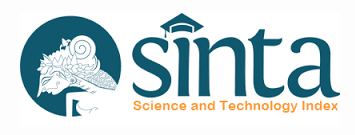TIKTOK SEBAGAI MEDIA DAKWAH
Abstrak
This study aims to determine the benefits of the Tiktok application as an online da'wah media and the strategy for delivering da'wah through the Tiktok application. The research uses a qualitative description research approach with the type of content analysis research or da'wah content in the social media application Tiktok. There are two data sources in this study, namely primary data sources and secondary data sources. The stages in the data analysis process are data collection, data presentation, data reduction, and drawing conclusions. The results of the study show that there are benefits of TikTok as a propaganda medium. This is because the Tiktok application is easier and more efficient and the da'wah material is delivered briefly, concisely, and clearly without being wordy. Besides that, the benefits of the TikTok application as an online propaganda medium increase the knowledge of Mellineal Islam. The strategy for conveying da'wah in the Tiktok application is to adapt da'wah content to the needs of young people, prepare da'wah material briefly and clearly, explain the sources and clarity of da'wah originating from the Al-Quran and Hadith and choose the language that is suitable for all groups of da'wah objects. This research implies that it is hoped that in determining or choosing the material or theme of da'wah it must be based on an ongoing or viral phenomenon, besides that, a phenomenon that needs justification, especially things that have strayed far from Islamic law which has become a norm in the present with sources from the book used as a reference for making material. It is hoped that millennials will contribute to content production actors, especially da'wah content, and become an illustration of preaching on social media and how to produce da'wah content through the social media Tiktok.
Once an article was published in the journal, the author(s) are:
granted to the journal right licensed under Creative Commons License Attribution that allows others to share the work with an acknowledgment of the work's authorship. permitted to publish their work online in third parties as it can lead to wider dissemination of the work. continue to be the copyright owner and allow the journal to publish the article with the CC BY license receiving a DOI (Digital Object Identifier) of the work.





